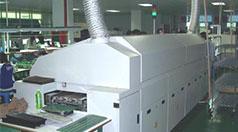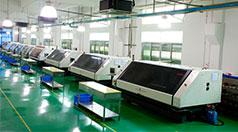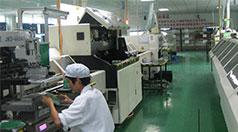The particular requirements of track heights and material thickness for the production of a multi-layered Printed Circuit Board (PCB) is termed as Stack-Up. This Stack-Up is shown on the PCB fabrication drawings where a cross-sectional view shows the copper and material thickness of all layers in the design. Stack-Up is a method to show the manufacturer the correct procedure of manufacturing the PCB so it works as intended.
There are two basic types of material commonly used in multi-layered designs; the first one is Pre-Preg, which is resin-treated glass in uncured form and is utilized for filling gaps of cores and foils of the external layer aside from bonding different layers. The second one is core material having a thickness of about 0.031 or less and has copper on both of its sides thus is named cured laminate. For making the outer layer, foils of copper with different weights (0.5 ounces or more) are utilized.
Pre-preg and core materials are key ingredients of multi-layer PCB manufacturing. For multi-layer PCB manufacturing, the core is used as the base material. The core material has to be attached to the circuit by etching and treating with oxides to ensure that it attaches perfectly with pre-preg layers which are applied later and finally Stack-Up. This complete process of stacking layers of materials over each other is similar to the creation of a multi-layer book.
For example, let’s consider the creation of a book with a four-layer board; the first layer of the PCB has copper foil and then comes one or multiple layers of pre-preg based on the requirements. Core material comprises the 2nd and 3rd layers (2nd and 3rd pages) and is placed on top, and then one or multiple layers of pre-preg come after that which is finally covered using the last layer thereby completing the book. For making one mechanically strong board, based on the manufacturing process available, many different books can be layered up and forwarded to press which are then vacuum or hydraulic pressed and treated carefully at the required temperatures. A mix of carefully chosen temperatures and pressures for a specified amount of time is the essence of a curing process during which molecules get bonded with each other.
Once curing is done, the finished panels or books are taken out from the pressing machine and their edges are smoothed by trimming the extra material; they are then forwarded to be drilled. Once the drilling is completed, they are ready for the rest of the PCB manufacturing process.
Welcome to Shenzhen Grande Electronic Co., Ltd.!








